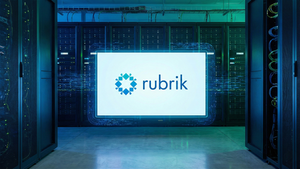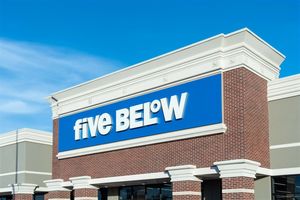
Homebuilder NVR (NYSE: NVR) reported revenue ahead of Wall Street’s expectations in Q2 CY2025, but sales were flat year on year at $2.60 billion. Its GAAP profit of $108.53 per share was in line with analysts’ consensus estimates.
Is now the time to buy NVR? Find out by accessing our full research report, it’s free.
NVR (NVR) Q2 CY2025 Highlights:
- Revenue: $2.60 billion vs analyst estimates of $2.47 billion (flat year on year, 5.4% beat)
- EPS (GAAP): $108.53 vs analyst expectations of $109.00 (in line)
- Adjusted Operating Income: $423.2 million vs analyst estimates of $403 million (16.3% margin, 5% beat)
- Operating Margin: 16.3%, down from 19.1% in the same quarter last year
- Backlog: $4.75 billion at quarter end, down 12.8% year on year
- Market Capitalization: $23.48 billion
Company Overview
Known for its unique land acquisition strategy, NVR (NYSE: NVR) is a respected homebuilder and mortgage company in the United States.
Revenue Growth
A company’s long-term performance is an indicator of its overall quality. Any business can put up a good quarter or two, but the best consistently grow over the long haul. Thankfully, NVR’s 8.3% annualized revenue growth over the last five years was decent. Its growth was slightly above the average industrials company and shows its offerings resonate with customers.
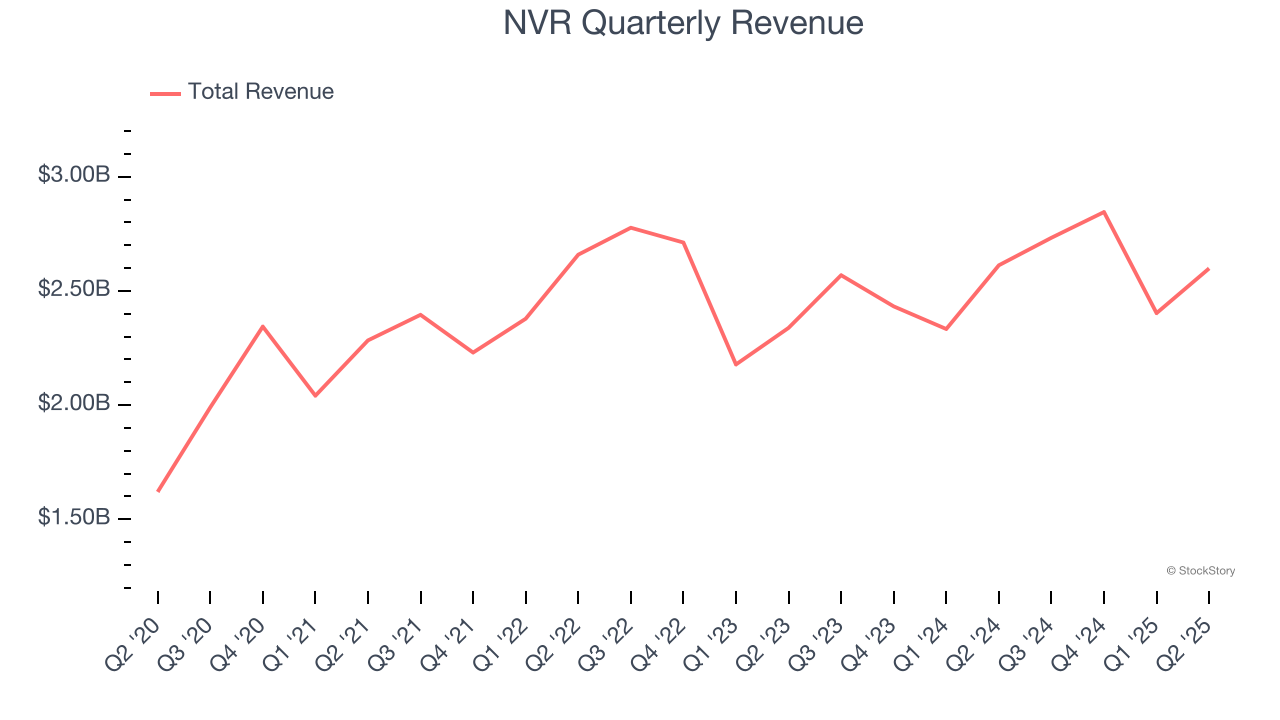
We at StockStory place the most emphasis on long-term growth, but within industrials, a half-decade historical view may miss cycles, industry trends, or a company capitalizing on catalysts such as a new contract win or a successful product line. NVR’s recent performance shows its demand has slowed as its annualized revenue growth of 2.8% over the last two years was below its five-year trend. 
We can dig further into the company’s revenue dynamics by analyzing its backlog, or the value of its outstanding orders that have not yet been executed or delivered. NVR’s backlog reached $4.75 billion in the latest quarter and averaged 1.3% year-on-year growth over the last two years. Because this number is lower than its revenue growth, we can see the company hasn’t secured enough new orders to maintain its growth rate in the future. 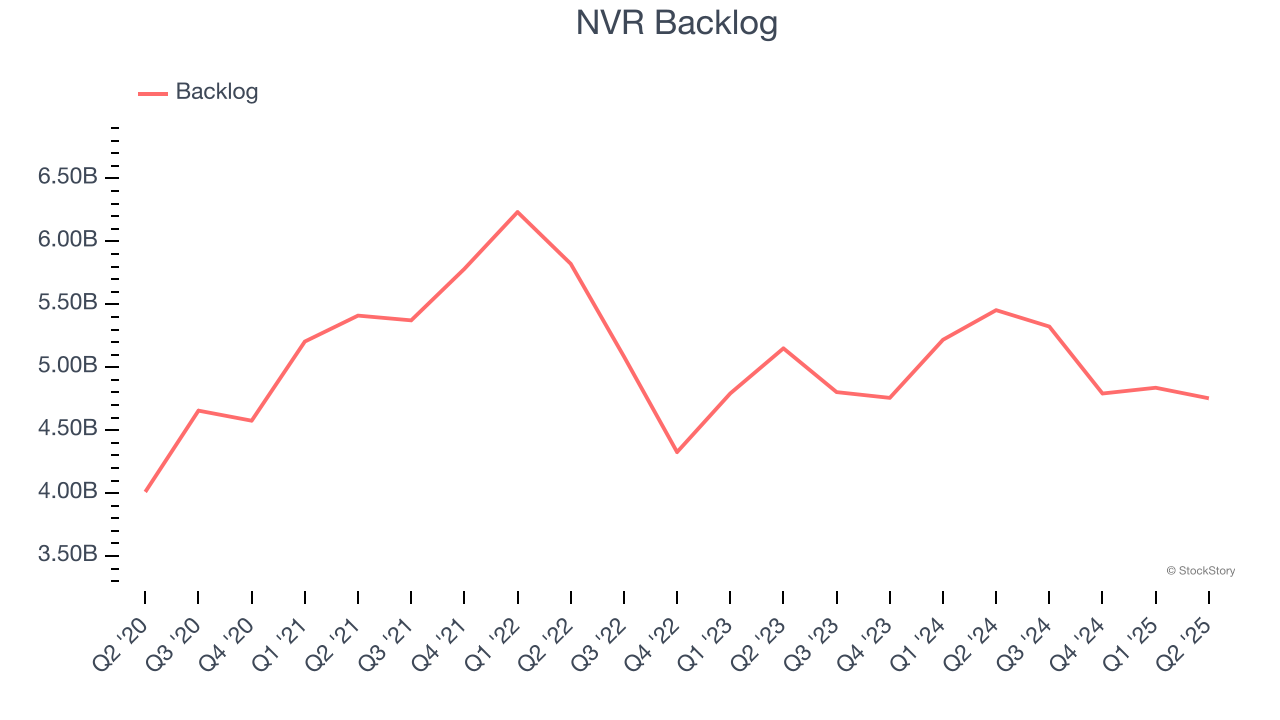
This quarter, NVR’s $2.60 billion of revenue was flat year on year but beat Wall Street’s estimates by 5.4%.
Looking ahead, sell-side analysts expect revenue to decline by 9% over the next 12 months, a deceleration versus the last two years. This projection is underwhelming and indicates its products and services will see some demand headwinds.
Today’s young investors won’t have read the timeless lessons in Gorilla Game: Picking Winners In High Technology because it was written more than 20 years ago when Microsoft and Apple were first establishing their supremacy. But if we apply the same principles, then enterprise software stocks leveraging their own generative AI capabilities may well be the Gorillas of the future. So, in that spirit, we are excited to present our Special Free Report on a profitable, fast-growing enterprise software stock that is already riding the automation wave and looking to catch the generative AI next.
Operating Margin
NVR’s operating margin might fluctuated slightly over the last 12 months but has remained more or less the same, averaging 18.7% over the last five years. This profitability was elite for an industrials business thanks to its efficient cost structure and economies of scale. This result was particularly impressive because of its low gross margin, which is mostly a factor of what it sells and takes huge shifts to move meaningfully. Companies have more control over their operating margins, and it’s a show of well-managed operations if they’re high when gross margins are low.
Looking at the trend in its profitability, NVR’s operating margin might fluctuated slightly but has generally stayed the same over the last five years. This raises questions about the company’s expense base because its revenue growth should have given it leverage on its fixed costs, resulting in better economies of scale and profitability.
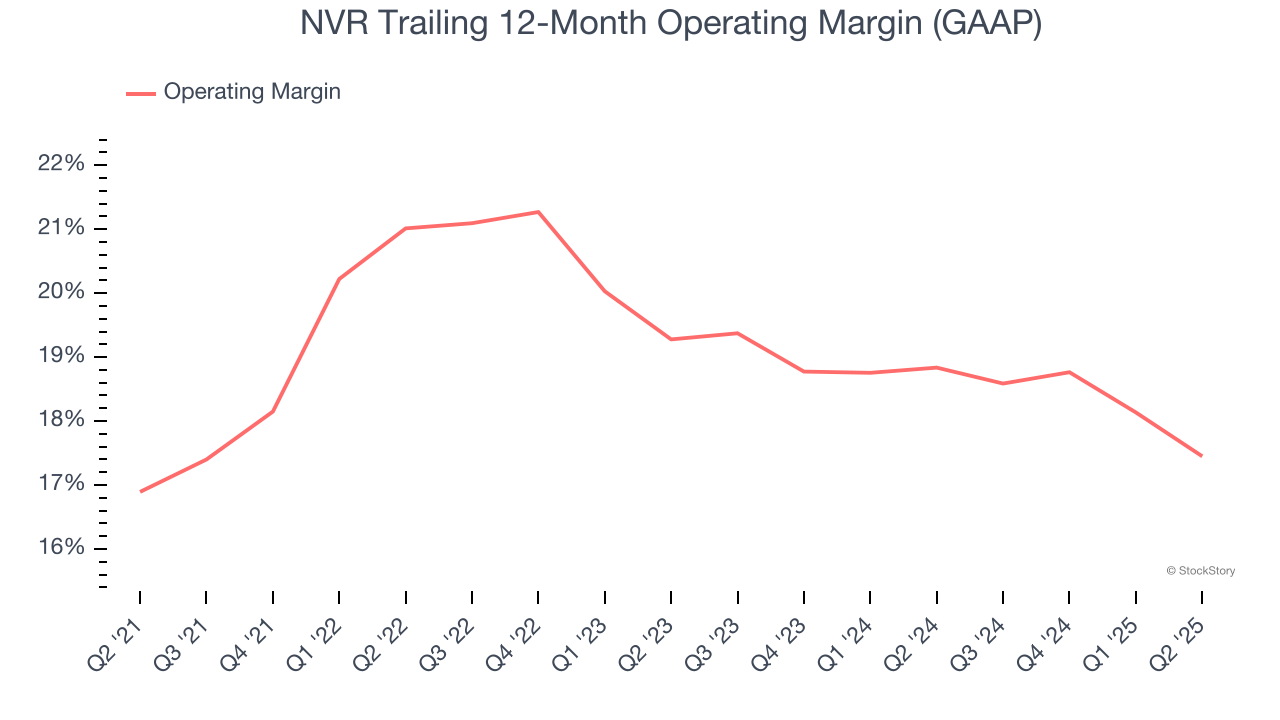
This quarter, NVR generated an operating margin profit margin of 16.3%, down 2.8 percentage points year on year. Since NVR’s operating margin decreased more than its gross margin, we can assume it was less efficient because expenses such as marketing, R&D, and administrative overhead increased.
Earnings Per Share
Revenue trends explain a company’s historical growth, but the long-term change in earnings per share (EPS) points to the profitability of that growth – for example, a company could inflate its sales through excessive spending on advertising and promotions.
NVR’s EPS grew at an astounding 17.9% compounded annual growth rate over the last five years, higher than its 8.3% annualized revenue growth. This tells us the company became more profitable on a per-share basis as it expanded.
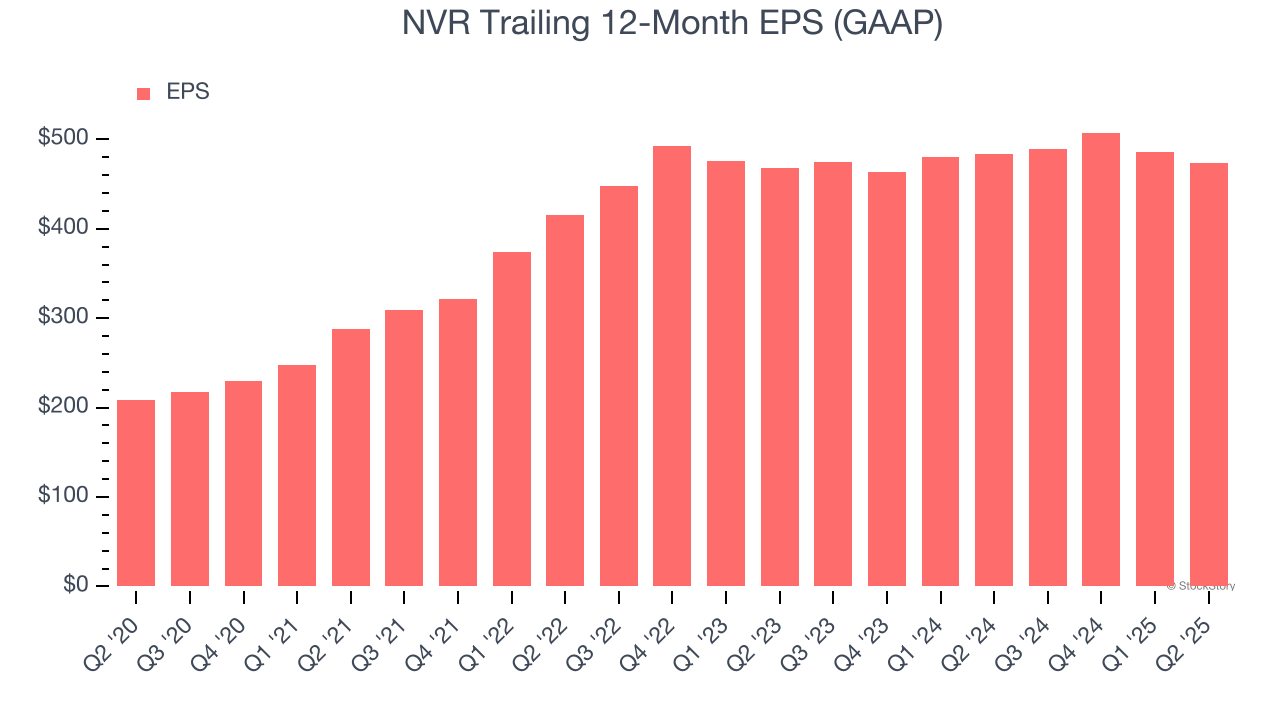
We can take a deeper look into NVR’s earnings quality to better understand the drivers of its performance. A five-year view shows that NVR has repurchased its stock, shrinking its share count by 20.4%. This tells us its EPS outperformed its revenue not because of increased operational efficiency but financial engineering, as buybacks boost per share earnings. 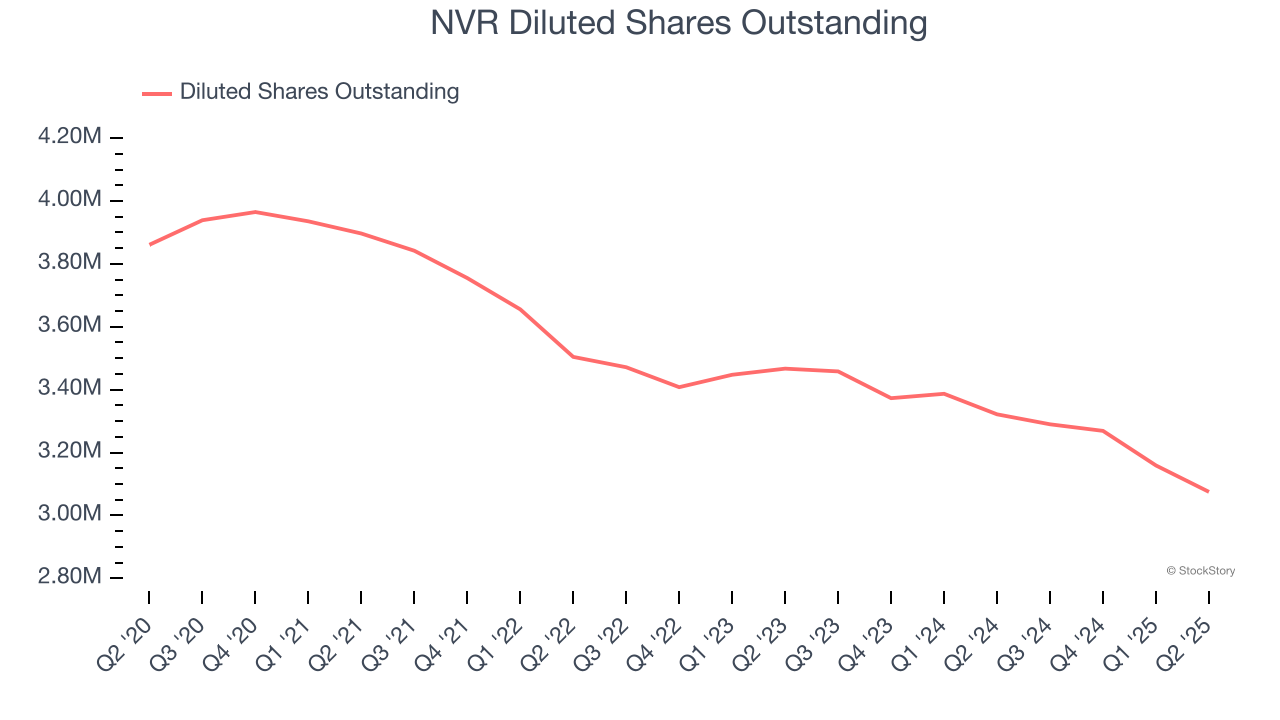
Like with revenue, we analyze EPS over a more recent period because it can provide insight into an emerging theme or development for the business.
For NVR, EPS didn’t budge over the last two years, a regression from its five-year trend. We hope it can revert to earnings growth in the coming years.
In Q2, NVR reported EPS at $108.53, down from $120.68 in the same quarter last year. This print was close to analysts’ estimates. Over the next 12 months, Wall Street expects NVR’s full-year EPS of $473.79 to shrink by 8.5%.
Key Takeaways from NVR’s Q2 Results
We were impressed by how significantly NVR blew past analysts’ revenue expectations this quarter. We were also glad its adjusted operating income outperformed Wall Street’s estimates. On the other hand, its backlog missed. Overall, this print was mixed, with backlog--a leading indicator of future revenue--as the key negative. The market seemed to be hoping for more, and the stock traded down 1.9% to $7,750 immediately following the results.
Should you buy the stock or not? We think that the latest quarter is only one piece of the longer-term business quality puzzle. Quality, when combined with valuation, can help determine if the stock is a buy. We cover that in our actionable full research report which you can read here, it’s free.


